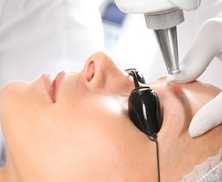Body art and the practice of decorating or ornamenting the body using various means has been adopted by many different cultures over the years. The majority of body painting techniques are only temporary or semi-permanent and so can easily be removed at any time. However, it is the permanent tattoo as a form of body modification that poses the most problems in terms of removal.
In this feature, How body art techniques affect tattoo removal treatments we’ll be looking at the various body art techniques carried out by professional tattooists and how this work can be undone.
Latest tattoo trends
Millions of Britons are having tattoos done these days, as what was once considered to be counter-culture has now been embraced by mainstream society. With such large numbers involved, it is inevitable that a proportion of these people will have regrets over this decision to mark their bodies with tattoos.
A survey by online beauty retailer Escentual found that a sixth of the 1,200 people questioned hated their tattoos so much that they were now looking to have them surgically removed.
For those that do decide to go down this route, it is important to research this thoroughly as there are a number of aspects that can influence how straightforward the removal process is likely to be.
Many people have already decided to take action, with some of the UK’s top skin specialists admitting they are carrying out more laser tattoo removals than ever before. This is a more convenient, comfortable and effective method compared to traditional abrasive removal techniques.
Tattoo techniques are becoming increasingly more skilful
The aim of any tattooist is to create the proposed tattoo design, by getting the ink under the skin in a way that allows the skin to heal, thus ensuring this becomes a permanent feature.
Tattoo equipment is generally viewed by professionals as just a device that enables the tattooist to draw the tattoo with a greater degree of accuracy and precision, so the skill of the artist is what sets them apart from others less talented.
The intensity of the colour shading, in particular, can do more damage to the skin and strain it to the absolute maximum. If the work has been done by a skilled artist who has used the right tip, adapted to the needle selected, you can expect the damage to be limited.
As modern professional tattoo machines get even more sophisticated and the possibilities for more extravagant designs increase, so these body art techniques can be harder to undo unless they are removed in the right way.
Since the invention of the electric tattoo machine, professional tattooists have become familiar with the process whereas ink is inserted into the skin using a single needle or group of needles soldered to a bar and fitted to an oscillating unit. While the procedure is less risky in terms of infection – with tattooists having to stick to universal precautions such as the use of an autoclave – the removal of this permanent body art is complicated by coloured inks, which make certain tattoos tougher to remove completely.
The safe removal of tattoos is now possible
Despite the fact that it can be trickier to remove some shapes, sizes and colours of tattoo, as well as older designs that have been there for a long time, it is becoming increasingly common to see these permanent body art designs safely removed. The cutting edge technology used in modern treatments such as the laser method is highly effective at removing the tattoo, leaving the skin clear and healthy. Other removal treatments may not be as efficient at achieving this level of success.
While it can take multiple sessions for some tattoos to be completely removed – through the application of various wavelengths of laser light to the skin – it is always recommended that those in this position seek help from experienced tattoo removal specialists with the high-level equipment and the expertise required to achieve such impressive results.































